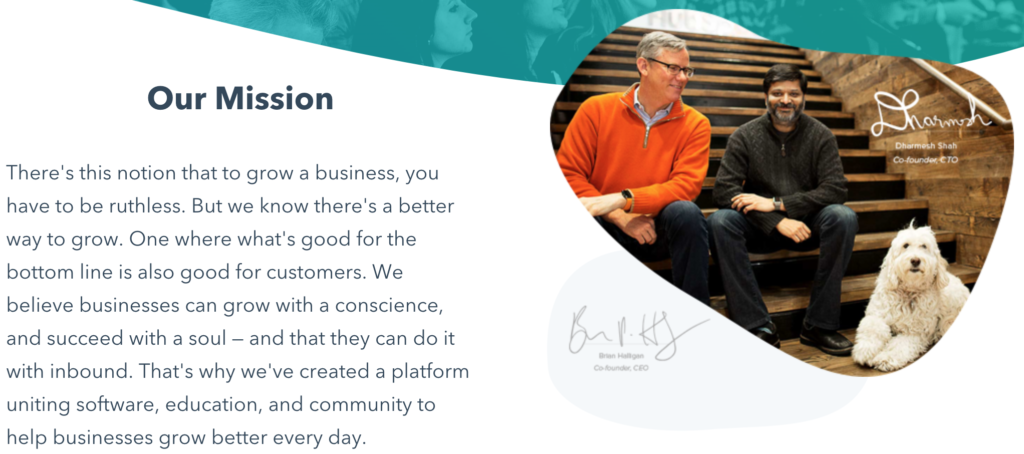Article's Content
Content Is Everywhere
“Good morning!” sings the alarm on your smartphone. Check the smartphone. Emails. On goes the smartwatch around your wrist. Unplug your wireless headphones. Maybe check social media. Open your laptop or unlock your tablet and you’re ready to start the day.
We’re bombarded with information and content before our morning coffee has even touched our lips. Let me say it again—content is everywhere. And a few dominant B2B content companies seem to show up on every channel. You know the brands I’m talking about—the ones who are pumping out content like it’s a natural resource, and who seem to be behind every single blog post you click on.
How much of the content you saw this morning came from one of these B2B content giants? Maybe a blog on HubSpot, a post by Buffer? Was it through Facebook, LinkedIn, Instagram or Twitter—or maybe all four?

There are multiple strategies for developing content, but which strategies you use will depend on your target audiences. It can be tricky to make content that resonates with your audience and then promote it in a way that entices people to check it out.
And these B2B content giants have absolutely nailed it.
But first things first…
What Is B2B Content?
Business-to-business (B2B) content is online material (e.g., videos, blogs and social media posts) that does not explicitly advertise a brand but is designed to stimulate interest in its products or services.
Content expands a business’ audience, develops and strengthens brand affinity, and develops leads, sales, and nurtures relationships with current and prospective clients.
In such a noisy climate, brands that want to dominate have to consistently produce content that’s new, insightful and attention-grabbing.
But even high-quality content can be swallowed up in the vast sea of content without a proper B2B marketing strategy.
B2B content needs to be carefully promoted to ensure it’s reaching the right audience. After all, you’re fighting with a lot of other brands’ content for space in the “attention economy.”
So yes, it’s loud out there, but there are certain B2B content giants giving their audience rapid, reliable information without all the clutter and unwanted noise.
Here’s how they’re getting it done.
Strategies From The B2B Content Giants
HubSpot the Hot Spot
As the mitochondria are the powerhouse of the cell, HubSpot is the powerhouse of B2B marketing. The company has a very strong mission statement that encapsulates how they do business:

Marketing & Sales: Different Content Disciplines
HubSpot has mastered marketing strategies—and sales strategies. What makes HubSpot so great is that they have separated the two distinct areas of business.
There is a cohesive partnership between marketing and sales, and both focus on generating revenue for the company, but they do so using different strategies and tools.
In a blog post, HubSpot explains that marketing informs and brings in leads and prospective customers to their products, whereas sales works directly with prospects to strengthen the value proposition and convert those prospective customers into actual customers.
So, HubSpot decided to move the two away from each other.

This allows readers who are interested in their products to read sales content and readers who are looking for research and tips to read marketing content. There is no irrelevant content in their way.
As you would expect from a leading content provider, HubSpot offers original insights into research and data about marketing, sales, and other B2B business practices—and does so consistently.

HubSpot Customer Code
With the tremendous growth HubSpot experienced, they came to realize they had not always delivered the highest possible customer experience. They were beginning to develop Customer Debt, which they define as a deficit between expectations and reality that would hinder their future growth.
To right the ship, they created the Customer Code:
- Earn my attention, don’t steal it.
- Treat me like a person, not a persona.
- Solve for my success, not your systems.
- Use my data, but don’t abuse it.
- Ask for feedback, and act on it.
- Own your screw-ups.
- Help me help you, by helping myself.
- I don’t mind paying, but I do mind being played.
- Don’t block the exit.
- Do the right thing, even when it’s hard.
The company is now devoted to living by these 10 carefully thought-out tenets. HubSpot scored themselves against each of the tenets and published the results in a report card fashion—being transparent and proving to customers that though they’re not perfect, they will never stop trying to be.
They also used these tenets as the foundation for new content to help other companies change the way they do business. These blog posts are honest and authentic and they offer actionable guidance for the readers—a winning combo.
Other B2B companies can follow suit. By developing clear, set-in-stone guidelines for content creation (and doing business as a whole), you can ensure that you’re doing right by your readers and always giving them something of value.
Buffer, Our BFF
Buffer is a genuine lifesaver when it comes to managing social media. The streamlined and easy-to-use platform allows for effortless planning and publishing across multiple social platforms. Oh—and they have one of the best B2B marketing blogs in the game.

Dependable Content
After blowing our minds with their radical corporate transparency, Buffer has continued to make waves on their blog—posting about buzzy topics, solving problems we did not know were problems, and providing content to particularly niche readers.
Buffer’s blog content not only includes more data and research than most B2B marketing blogs, but it manages to present this info in an irresistible way. Dry topics become compelling as Buffer combines data with psychology and other fascinating topics that you wouldn’t expect from a B2B marketing blog.
Their content is also easy to read, and you actually absorb the information, instead of just reading-but-not-actually-reading.
Breaking Down the Blog
Buffer’s persistence on its blog is what sets them apart from other competitors in the industry. Here’s why:
- Audience: Buffer writes to the right audience: potential customers. Aiming content solely at existing customers misses the point—they are already customers. By creating content that is user-friendly and highly shareable, Buffer can reach a wider audience.
- Guest posting: Buffer has figured out that integrating high quality, useful guest posts into their own blog allows their brand to reach new audiences. By giving space to guest writers, Buffer can tap into those writers’ audiences, who in turn become Buffer readers. Buffer is also focused on relationship building with guest bloggers and other content creators. As the brand talks about and shares other people’s content, those creators reciprocate, introducing Buffer to new audiences—without tons of effort on SEO either.
- Consistency: One fantastic blog post cannot be the sole trophy of a B2B marketing blog. That fantastic blog post needs to be outdone by another blog post shortly after. Buffer has developed a loyal audience by consistently publishing original, relevant, interesting blog posts. Buffer’s coverage of timely and trending topics is what makes them the go-to for B2B marketing content. They seem to have the answers before the problem is even said out loud.
BuzzSumo—Emphasis on Buzz
Now, BuzzSumo is an interesting platform. It examines real-time data from major social media networks to determine which topics in an industry are earning the most traction.
The platform digs through millions of blog posts and data points to find out which topics have trended on social media, how your competitors’ content is doing, what articles are getting shared.
Obviously, these features come in handy when BuzzSumo is creating content for their own blog.

BuzzSumo’s Buzzy Blog
BuzzSumo does not play around when it comes to B2B content on their blog.
Their consistency is phenomenal. They post new content just days apart—or sometimes two or more pieces a day.
Finding topics that are newly trending and creating content about them is what BuzzSumo excels at. For example, a September 2019 post entitled “Conversational Marketing, Social Media & Words That Work” offers deep insights related to a trending topic: conversational marketing. In fact, conversational marketing is an approach that BuzzSumo has adopted for its own content.
Their writing style is to the point and easy to read, and there are takeaways in every paragraph. This makes you feel like the writer is giving you what you came for, instead of just giving you a sales pitch.
Another writing technique that BuzzSumo does well is changing its tone based on the topic while maintaining the brand’s personality. In blog posts about social media, the tone is lighthearted and fun, whereas posts about more technical topics feel informational and to the point.
Different readers like different tones and writing styles. BuzzSumo gets it.

Wrapping It All Up
The world of B2B content is loud, cluttered and chaotic.
Everyone is writing about what they think are the best strategies and practices. Everyone wants to be an influencer.
Making sure your content reaches and resonates with your target audience is crucial.
So take it from the B2B content giants—simple strategies go a long way:
- Ensure that you split up different areas of B2B business, such as sales, marketing and media, to create content that is tailored to various target audiences. It is imperative that your content is organized by its intent so that readers can find what they’re looking for. Make a designated area for your blog, a section for certificates and credentials, and a section for product how-tos, for example—and remove content that is not relevant to those sections.
- Make sure your content writing style, personality and structure are tailored to your target audience. It is also important to write to prospective clients, as well as existing clients.
- Consistently producing content about topics that are relevant to your audience is how you will retain readers and build brand loyalty. Readers will come back again and again if they know that your blog is producing new, insightful content about topics that are timely and interesting. This will also heighten your visibility on search engines and social media platforms.
- Your tone matters in the content you produce: decide whether you are talking or selling, and stick with it.
- Posting content that goes beyond the blog can surprise your readers and keep them engaged. There are other benefits too—for example, testimonials can strengthen your company’s value proposition.








